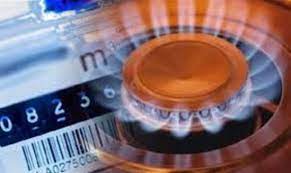According to a news statement from the Petroleum Division, the Economic Coordination Committee (ECC) accepted the amended natural gas pricing for the export and CNG sectors during an emergency meeting.
However, there is a great deal of misunderstanding because the Finance Division said that the ECC meeting will take place today, Tuesday.
As per the Petroleum Division, during the Federal Cabinet’s meeting on October 30, 2023, today, the summary was sent back to the ECC for reconsideration. Subsequently, the ECC accepted the amended pricing for natural gas.
According to the press release, the ECC has authorized gas tariffs of Rs. 2,400 per mmbtu for captive use and Rs. 2,100 for the process export sector.
Previously, the ECC had authorized a gas tariff for the export sector, ranging from Rs. 1,100 to Rs. 2,050 captive, as well as the process export industry, based on the petroleum division’s suggestion.
ProPakistani was informed by sources that the ministries of commerce and energy were pushing their own agendas. While acting energy minister Muhammad Ali worked to end exporter subsidies, acting commerce minister Gohar Ejaz advocated for lower gas prices for exporters. The ECC then decided to change the rates and implement the new ones.
While before, petroleum recommended a tariff for the non-export business ranging from Rs. 1,200 to Rs. 2,600, the ECC has now authorized Rs. 2,500 per mmbtu instead of Rs. 1,200 mmbtu.
For the CNG industry, the ECC also authorized a gas price of Rs. 3,600 per mmbtu. It has already authorized the CNG sector at Rs. 4,400 per mmbtu.
According to the Petroleum Division, on Monday, October 30, 2023, the Federal Government approved an increase in natural gas prices for various consumer categories based on recommendations from the OGRA. The increase will take effect on November 1, 2023, and is intended to encourage the efficient use of scarce commodities, such as natural gas, while keeping affordability and sustainability in mind.
On October 23, 2023, the Cabinet’s Economic Coordination Committee (ECC) authorized the rise in natural gas prices after reviewing the Petroleum Division’s assessment.
The national gas basket is being burdened with increasingly costly imported fuel (LNG) because of the fast-depleting natural gas supplies, which are declining at a pace of 5–7% annually. Gas prices have grown as a result of the sharp devaluation of the rupee relative to the dollar and overall inflation, which has raised the cost of gas production, distribution, and transmission.
Rather than fortifying the regulator and establishing robust internal controls inside the system to ensure transparency and efficiency, the previous administrations chose to keep control over the price of a limited resource. The national exchequer was weakened, and a circular debt stock of PKR 2.1 trillion (interest-free) was established due to inadequate gas pricing under previous governments and a lack of funding for the diversion of imported gas over time.
Some of the most successful companies in the nation are using the cheapest natural gas available since it’s more affordable. This has unfairly benefited some industries at the expense of the lowest-income group, which includes small-scale businesses and impoverished farmers. The caretaker administration has found it extremely difficult to decide on prices. The supply chain’s sustainability rationale and the affordability goal were at odds.
It is well known that the nation is a part of the IMF program, which outlaws all forms of subsidies.
For the first time in the previous two and a half (2.5) years, there was a price hike that took effect in January 2023. Only in FY 22–23, the insufficient response led to a rise of PKR 461 billion. There would be an additional PKR 400 billion in circular debt if the caretaker government did not raise prices in accordance with OGRA’s recommendations and finance the RLNG diversion to the domestic segment in the absence of subsidies.
The primary goals have been supply chain sustainability, or the absence of real cyclical debt flow, as well as practical and targeted affordability, with a focus on protecting enterprises and consumers and boosting gas accessibility for those who can use it efficiently.
Due to urban phenomena, just 30% of Pakistani families utilize piped gas; the remainder of the population, with some exceptions, uses biomass, wood, and cow dung in rural areas and LPG in cities and towns. 57% of residential gas connections are in the protected category, meaning that gas prices are not rising. There would be a set bill of just Rs. 400 each month.
Even with 0.9 hm3 of use each month, it is still guaranteed that the protected class’s monthly cost won’t surpass Rs. 900.
Higher-income households pay higher tariffs for unprotected categories, which are increased on a progressive basis. This is to make sure that middle-class households are not overburdened. Because “roti” is an absolute requirement, the government has kept the sale price of gas supply to Roti Tandoors entirely unaltered.
In order to protect farmers’ access to urea and maintain food security, fertilizer costs are maintained in line with the cost of gas at the Mari gas field, which is Rs. 580 per mmbtu. This is just a Rs. 70 increase over the previous price.
In order to level the playing field for all parties and rationalize gas prices in the North and South, industry tariffs are imposed. The petroleum division has created a Regionally Competitive Energy Tariff (RCET) in collaboration with stakeholders, taking into account the growth and emergence of net exporters such as Vietnam, Bangladesh, and India.
The Petroleum Division has maintained prices higher than normal in an effort to deter export and non-export clients from using their products.
The goal of demand destruction strategies is to conserve gas in industries where the use of gas is uncontrolled, inefficient, or if there are alternative fuels available. Over half of the nation’s users in the commercial sector currently utilize LNG. RLNG-based gas connections make up more than 27% of the CNG category’s gas connections. In similar words, the efficiency-adjusted cost of CNG is about half that of gasoline.






